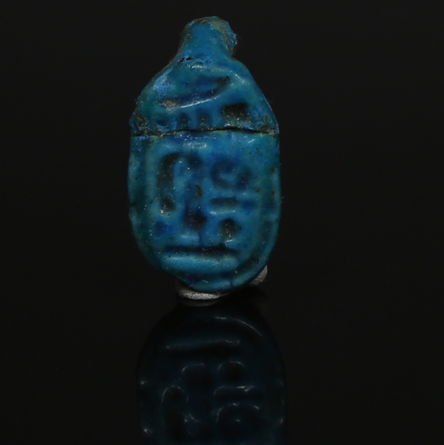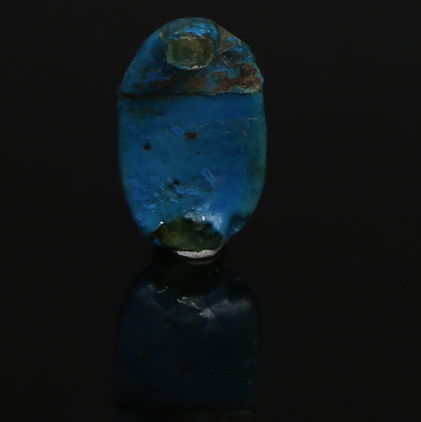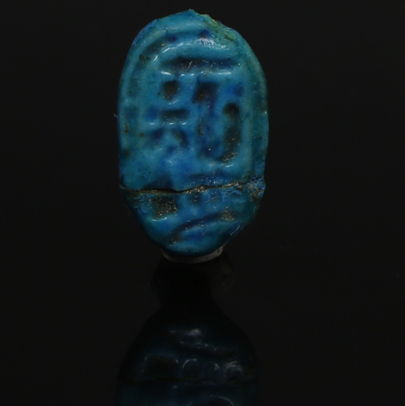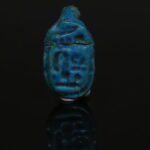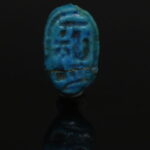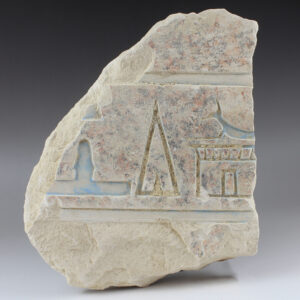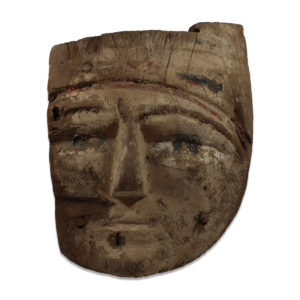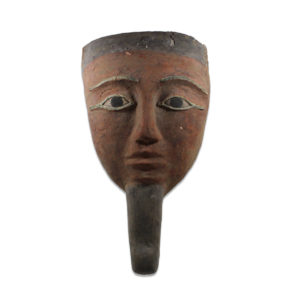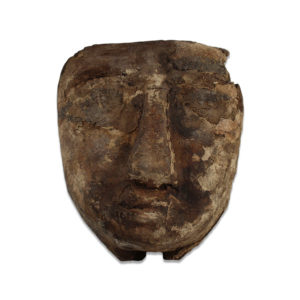Description
| ITEM | Ring fragment, Ankhesenamun, Tutankhamens queen |
| MATERIAL | Faience |
| CULTURE | Egyptian |
| PERIOD | Amarna period, 1330 B.C |
| DIMENSIONS | 20 mm x 12 mm |
| CONDITION | Good condition, fragmentary and repaired |
| PROVENANCE | Ex Museum Exhibiton of the Arbeitsgruppe für Biblische Archäologie, Germany (Deaccession) |
Ankhesenamun was the queen of Egypt during the 18th Dynasty, most famously known as the wife of Pharaoh Tutankhamun. She was born Ankhesenpaaten, the daughter of the heretic king Akhenaten and Queen Nefertiti, during a period of significant religious upheaval in Egypt when Akhenaten attempted to establish a monotheistic worship of the sun god Aten. Like many members of the royal family, Ankhesenamun’s name originally reflected her allegiance to the Aten, but after the death of Akhenaten and the restoration of the traditional polytheistic religion, her name was changed to Ankhesenamun to honor Amun, the chief god of the restored pantheon. Her life was deeply intertwined with the political and religious shifts of her time.
As the wife of Tutankhamun, Ankhesenamun played a significant role in the young king’s short reign, which began when he was about nine years old. Together, they sought to restore Egypt to its former religious traditions, moving the capital back to Thebes and reinstating the worship of Amun. Despite their efforts to stabilize Egypt, their reign was brief, lasting only around nine years, and they faced personal tragedies as well. Archaeological evidence suggests that Ankhesenamun may have borne several children, but none survived infancy, as revealed by the discovery of two mummified fetuses in Tutankhamun’s tomb.
After Tutankhamun’s untimely death around 1323 BCE, Ankhesenamun’s fate becomes more obscure. Historical evidence indicates that she may have made a desperate bid to secure her position by writing to the king of the Hittites, requesting to marry one of his sons, a move that was highly unusual and indicative of her precarious situation. However, the prince was killed on his way to Egypt, and Ankhesenamun disappears from the historical record soon after. It is believed that she may have been forced to marry Ay, a high-ranking official who succeeded Tutankhamun as pharaoh, but her ultimate fate remains a mystery, leaving scholars to speculate about the end of her life.


